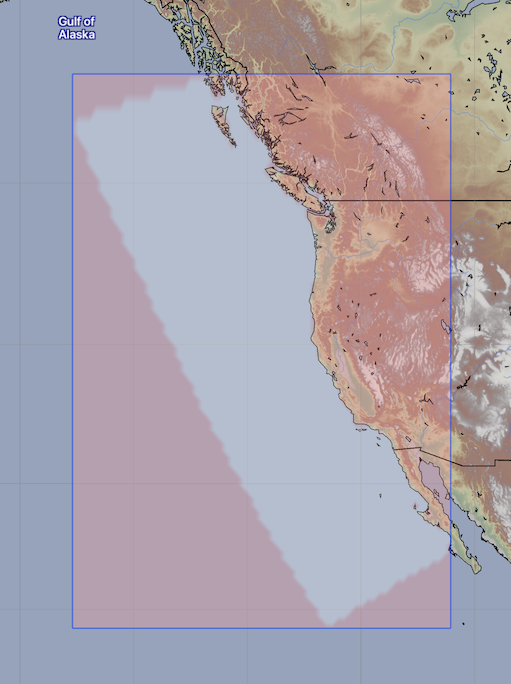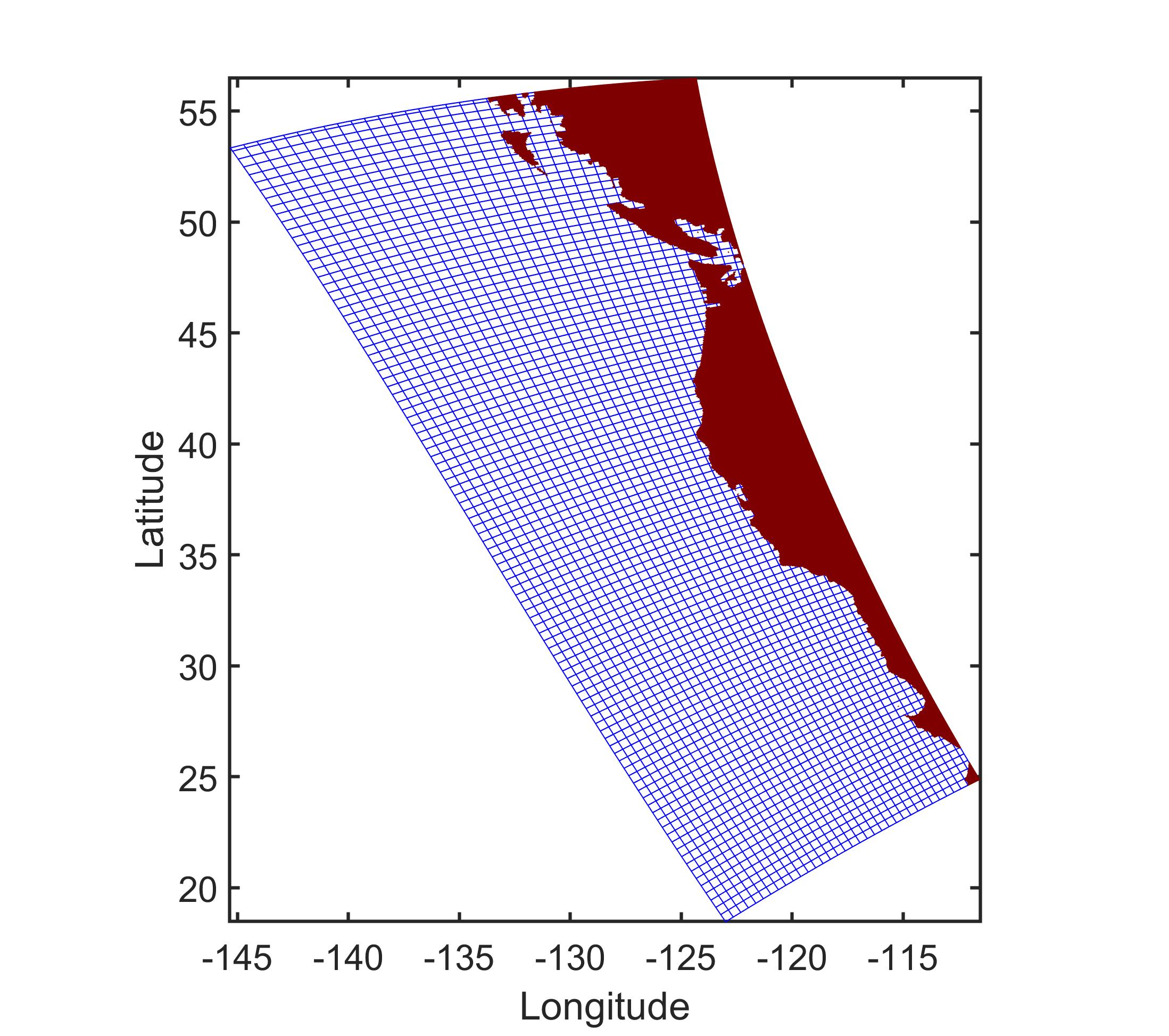
OFS West Coast Currents
| Provider: | Center for Operational Oceanographic Products (NOAA) |
| Model scope: | North America West Coast |
| Update frequency: | every 24 hours |
| Resolution: | 2.4nm, 4.4km |
| Model duration: | 24 forecasts starting at 3 hrs, ending at 3 days |
| Parameters: | current, tide |
| GRIB model date: | Fri Dec 19 03:00:00 2025 UTC |
| Download date: | Fri Dec 19 04:35:53 2025 UTC |
| Download delay: | 1hr 35min |
Note: the Download delay is the amount of time required for the GRIB model to compute its forecast and then for the LuckGrib cluster to download the data and make it available. The LuckGrib delay is generally less than 10 minutes, the remainder of the delay is the model compute time.
Description
The following text has been taken from the OFS site which describes this model:
For decades, mariners in the United States have depended on NOAA’s Tide Tables for the best estimate of expected water levels. These tables provide accurate predictions of the astronomical tide (i.e., the change in water level due to the gravitational effects of the moon and sun and the rotation of the Earth); however, they cannot predict water-level changes due to wind, atmospheric pressure, and river flow, which are often significant.
A three-dimensional U.S. West Coast Operational Forecast System (WCOFS) has been developed to serve the maritime user community. WCOFS was developed in a joint project of the NOAA/National Ocean Service (NOS)/Office of Coast Survey, the NOAA/NOS/Center for Operational Oceanographic Products and Services (CO-OPS), and the NOAA/National Weather Service (NWS)/National Centers for Environmental Prediction (NCEP) Central Operations (NCO) using Rutgers University’s Regional Ocean Modeling System (ROMS). WCOFS assimilates real-time observations in a three-day window to generate water level, current, temperature and salinity nowcast and forecast guidance once a day. Aerial animations of the surface properties as well as time series at particular stations or points of interest are available for the wind, water level, currents, temperature, and salinity.
WCOFS runs on NOAA’s High Performance Computers (HPC) in a standard Coastal Ocean Modeling Framework (COMF) developed by CO-OPS. As a result, WCOFS has direct access to National Weather Service operational meteorological products and real time observations in WCOSS datatank that it needs to run reliably.
Grid
 https://tidesandcurrents.noaa.gov/images/ofs/wcofs_grdmesh.jpg
https://tidesandcurrents.noaa.gov/images/ofs/wcofs_grdmesh.jpgThe West Coast OFS model is calculated using a bathymetry following irregular grid which has over 350,000 grid nodes. In the image of the grid, above, only every 10th grid point is shown. The results of this computation are then sampled, by OFS, into a regular latitude / longitude aligned grid. The data on this regular grid are then converted to GRIB format by LuckGrib.
Additional information
For additional information, see: